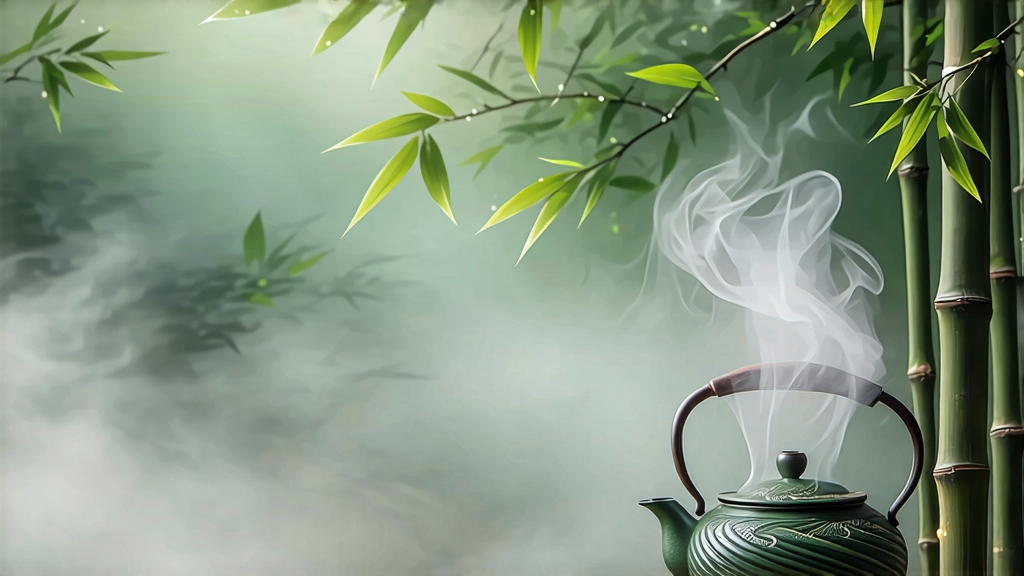
Nestled among the fruit-laden hills of Dongting Mountain in Jiangsu Province, Biluochun—whose name translates literally to “Green Snail Spring”—has captivated Chinese tea lovers for more than a thousand years. International drinkers often meet it under the phonetic label “Pi Lo Chun,” yet whatever the spelling, the leaf’s tiny spiral shape and intoxicating bouquet place it among the world’s most distinctive green teas. To understand Biluochun is to step into a microcosm of Chinese terroir, history, and craftsmanship, where the line between tea and aromatherapy blurs with every sip.
Historical whispers trace Biluochun’s birth to the Tang dynasty (618-907), when local monks first fired wild tea shoots beside their cliff-side temples. Formal records appear during the late Ming, when the Kangxi Emperor (r. 1661-1722) visited Lake Taihu and renamed the tea “Biluochun” to honor its jade color (bi), snail-like curl (luo), and early spring harvest (chun). Court chroniclers note that the leaf’s original name, “Xia Sha Ren Xiang” (“scary fragrance”), startled the emperor because its aroma was so overwhelmingly floral. Thus a monarch’s pen christened a tea that would soon share the summit of Chinese green tea hierarchy alongside Longjing, Huangshan Maofeng, and Liu’an Guapian.
Terroir defines possibility. Dongting Mountain rises from the eastern edge of Taihu, China’s third-largest freshwater lake. The water body moderates temperature, creating a misty microclimate that filters sunlight into soft, diffused rays. Peach, plum, and apricot trees are interplanted among tea bushes; their blossoms fall like snow, enriching the soil and scenting the nascent leaves. Soils are acidic, well-drained quartz sandstone mixed with lake-deposited humus, forcing roots to struggle and concentrate amino acids—especially L-theanine, responsible for the tea’s famed sweet umami.
Although all Biluochun comes from this tiny peninsula, three grades exist. “Supreme” (Te Ji) is picked at dawn on the first three days of spring, using only the topmost bud just beginning to unfurl. “Grade One” (Yi Ji) allows one bud and one unfolding leaf, harvested through the Qingming festival. “Grade Two” (Er Ji) extends to one bud and two leaves, picked before the Grain Rain. Each step down enlarges the leaf, loosens the spiral, and softens both price and perfume. Purists insist that true Biluochun must be plucked entirely by hand, 70,000 buds yielding barely 500 g of finished tea—an ounce of gold in a teacup.
The craft has changed little since Kangxi’s day. Pickers place micro-batches into shallow bamboo baskets to prevent bruising. Within two hours the leaves reach the village workshop, where they are spread 2 cm thick on bamboo trays and withered for 30–45 minutes in shade, reducing grassy notes. The critical “sha qing” (kill-green) step follows: leaves are tossed into a drum pan pre-heated to 180 °C. With bare hands, the master agitates 250 g at a time for exactly 3.5 minutes, relying on the hiss and aroma to judge when enzymes are neutralized. Immediately the temperature drops to 70 °C and the “cuo tuan” (rub-spiral) phase begins. Using a feather-light touch, the master rolls the leaf against the pan in concentric circles, coaxing the iconic spiral while moisture drops from 74 % to 30 %. A final low-heat drying at 50 °C for 20 minutes sets the shape and locks in fragrance. Throughout, the room fills with the scent of night-blooming jasmine, though no flowers are added—proof of the interplanted orchard’s invisible signature.
To brew Biluochun is to court subtlety. Choose a tall, thin glass or a 150 ml porcelain gaiwan; glass reveals the “tea dance,” where the spirals unfurl like green snails awakening. Water should be spring-soft and 75 °C—any hotter scalds the downy hairs, releasing bitterness. Weigh 3 g (roughly a heaping teaspoon) and pour 50 ml of water first, just to cover the leaves; swirl gently, then fill to 120 ml. The first infusion, 45 seconds, releases orchid and honeydew; the second, 30 seconds, adds white peach; the third, 50 seconds, brings a faint mineral snap